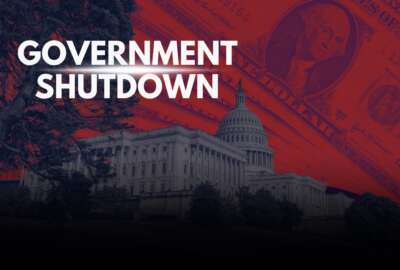OPM updates closure procedures; no excused absences for pre-approved paid leave
Under new dismissal and closure procedures issued by the Office of Personnel Management today, federal employees who are on pre-approved paid leave during a...
Federal employees who are on pre-approved paid leave during a government closure will no longer be given an excused absence, according to updated Washington, D.C., Area Dismissal and Closure Procedures released today by the Office of Personnel Management.
In previous years, a federal closure day was counted as a non-workday.
“In the past, employees automatically received excused absence if they were on pre-approved paid leave when the federal offices were closed,” said Brenda Roberts, OPM’s deputy associate director for pay and leave, during a Wednesday morning webcast.
OPM made the decision to alter this policy to take into account “the new realities of the 21st century,” Roberts said. In particular, OPM is making the change based on the large number of federal employees in the Washington, D.C., area who now have the ability to work from home.
The Telework Enhancement Act of 2010 required agencies to incorporate telework into the continuity of operation plans. At the same time, OPM was encouraging telework as part of its operating procedures. It was telling agencies to get their telework agreements together and put an IT infrastructure in place so that employees could telework during an emergency.
“We have been telling agencies that they need to be migrating towards allowing people to telework all year through, so they can actually have the capability of working during a federal closure day,” Roberts said. “As a result, the federal government is now considered open on a federal closure day.”
During the webcast, Dean Hunter, OPM’s director of facilities, security and contracting, referenced the annual Employee Viewpoint Survey that says about 61.7 percent of federal employees have the ability to telework at least some time.
The federal government closed five times during the 2013-14 winter season, which tied for the most closures within a single season. The government also had four unscheduled leave/unscheduled telework events and three delayed- arrival events.
In describing the decision-making process OPM follows for determining if the government should be closed, Hunter said that the agency tries to make the decision as early as possible.
“Working with the Council of Governments, we’ve come up with some prescripted times when we do have calls,” he said. “It might be 9 p.m., but quite often it’s 3 a.m. when we have the latest and greatest information. And our pledge is to make that decision and disseminate it to the federal government, to the public by 4 a.m.”
A typical triggering event for considering closure during the winter season is 1 inch of snow or an accumulation of ice expected to occur during rush hour, either in the morning or evening. OPM will then participate in a conference call with the Washington area Council of Governments, to discuss weather conditions and the impact they will have on roadways and mass transit, as well as power outage capabilities.
“We need to be prepared for weather and unexpected emergencies all year round. It is important that agencies and their employees know their personnel designations, telework policies, and emergency preparedness plans before an event occurs,” said OPM Director Katherine Archuleta in a blog post. “The past few years have taught us that our dismissal and closure procedures extend beyond winter weather emergencies and can be necessary at any time.
Once the decision is made to close, OPM applies a shotgun approach to disseminating the information. First, it updates the operating status on the OPM website. It then pushes out the message on its OPM Alert App. OPM then notifies the media, the White House, Congress, agency chief human council officers and the Council of Governments.
Hunter encouraged people to signup for the app, as it’s the quickest way to receive up-to-the-minute updates on closure information. “That will give you the instantaneous information as soon as we get it and send it, you’ll get it,” he said.
Many of the questions OPM receives from federal employees about its closure policy and procedures concern telework. Whether an employee is able to telework is based on agency policies, Roberts said.
“Not every job is conducive to telework,” she said. “You’re going to have positions such as nurses or construction workers or receptionists that are able to telework. And then you’re going to have other jobs where agencies have practiced their telework procedures. They’ve developed an infrastructure. They’ve allowed their employees to practice throughout the whole year and their policies are updated. Their communications are established where they know what to do. These employees practice all year round, so these employees are actually able to work during federal closure days and many agencies are requiring them to actually work during the closure days.”
Roberts recommended that federal employees review the operating announcements within the guide so that they’ll be familiar with the procedures in the event of an emergency.
“What do you do when you have an unscheduled leave/unscheduled telework day? Am I allowed to telework? Do I have a written telework agreement? And then know what to do,” Roberts said. “Do I have to work on a closure day?”
Roberts also recommended that human resources personnel have their telework procedures in place.
“Have those written telework agreements teed up,” she said. “Make sure that everything is in place prior to any emergency happening, so employees know what they need to do. It’s important that they know what to do prior to the emergency so we’re able to have the procedures be effective.”
View OPM’s archived webcast.
RELATED STORIES:
OPM tweaks snow-closure policy, with added push for telework
Copyright © 2024 Federal News Network. All rights reserved. This website is not intended for users located within the European Economic Area.
Michael O’Connell is senior digital editor of Federal News Network optimizing content for the best user experience. Follow @moconnellWFED
Follow @moconnellWFED






